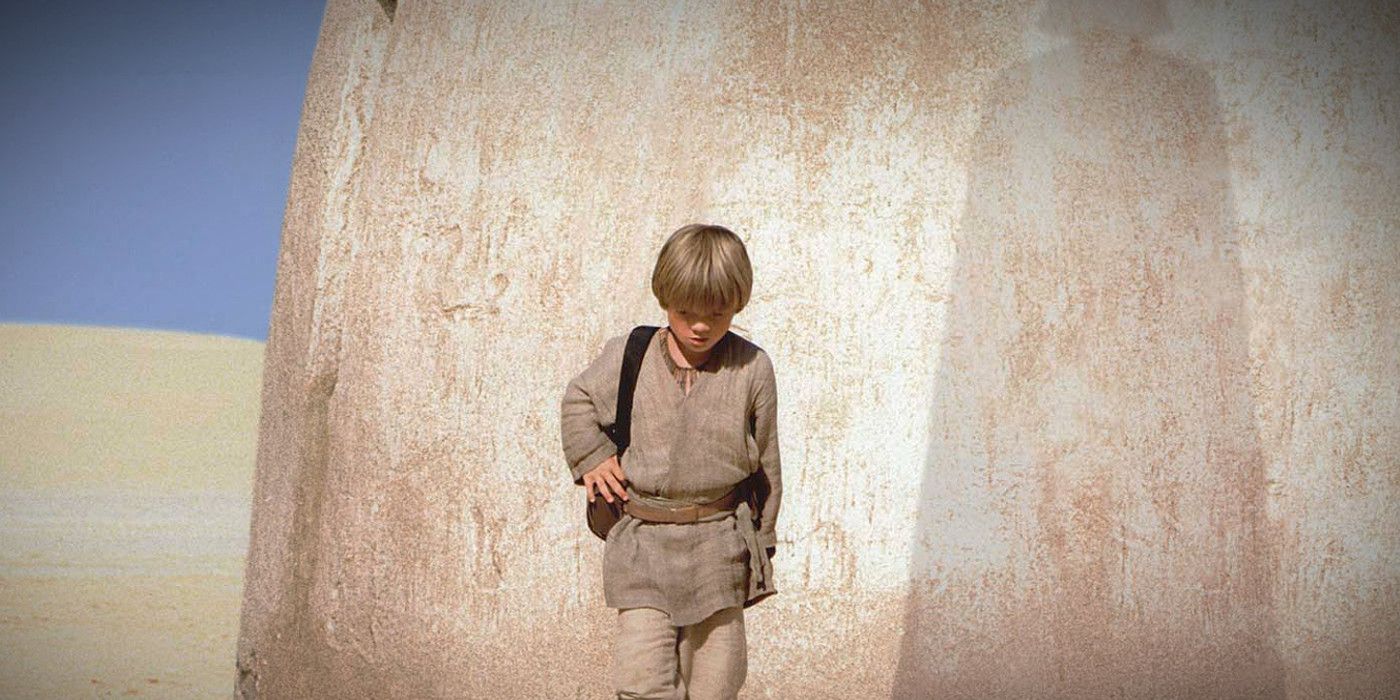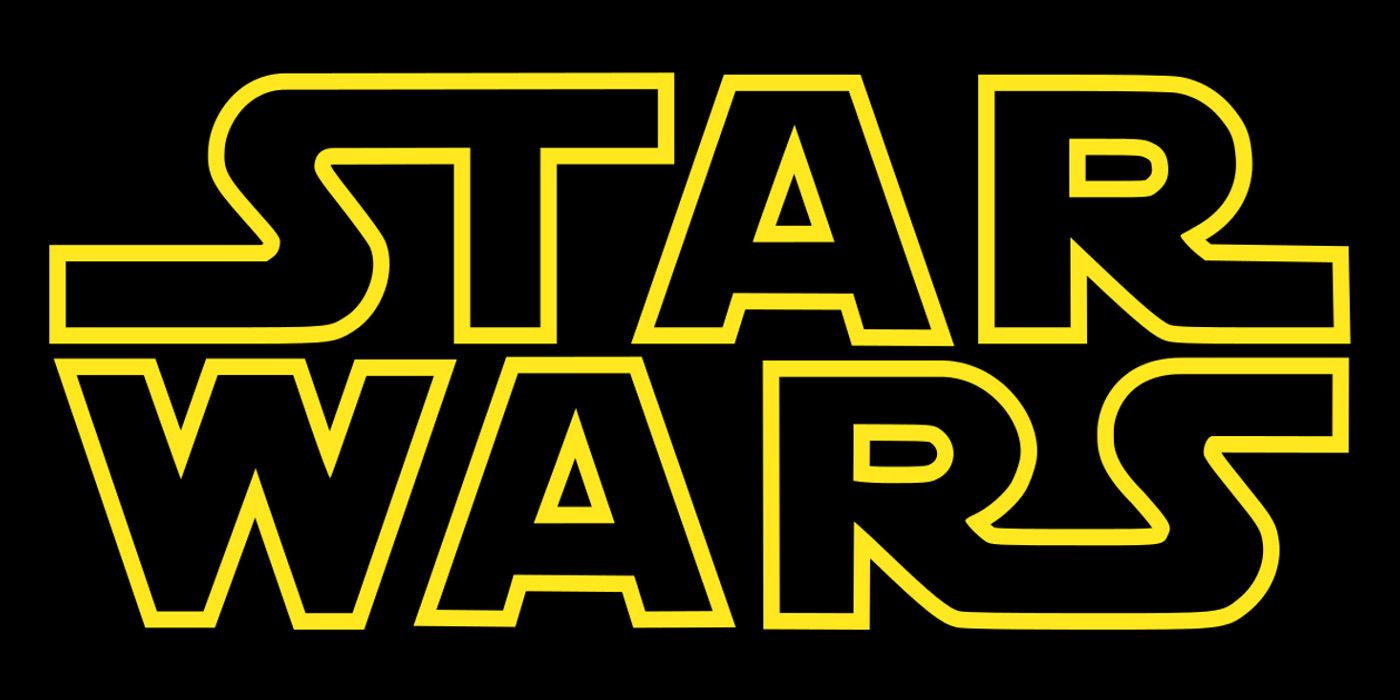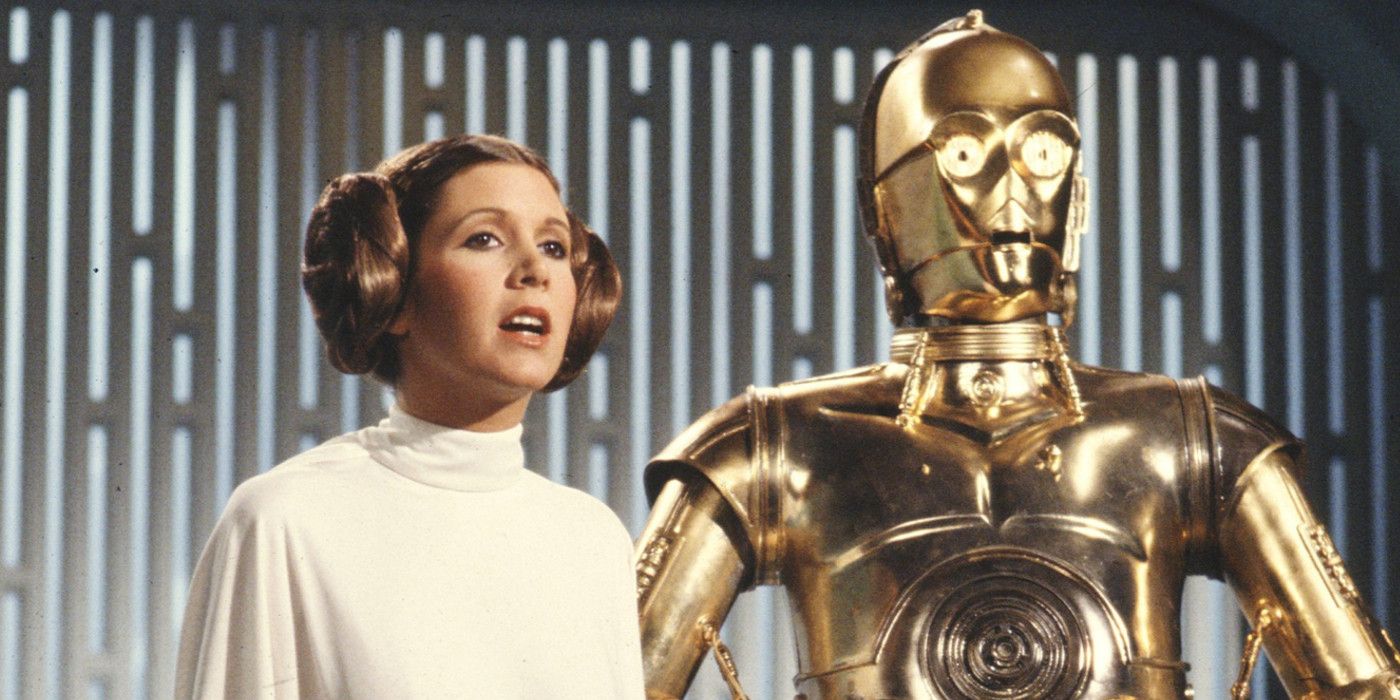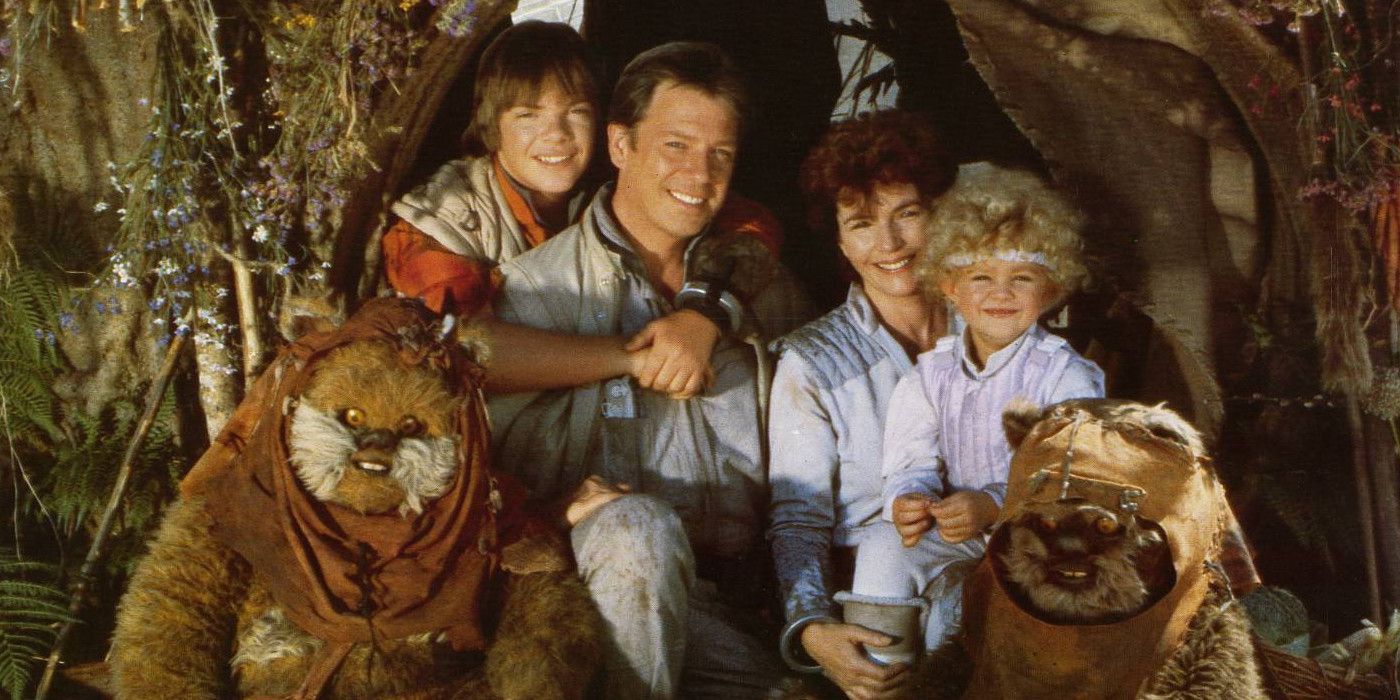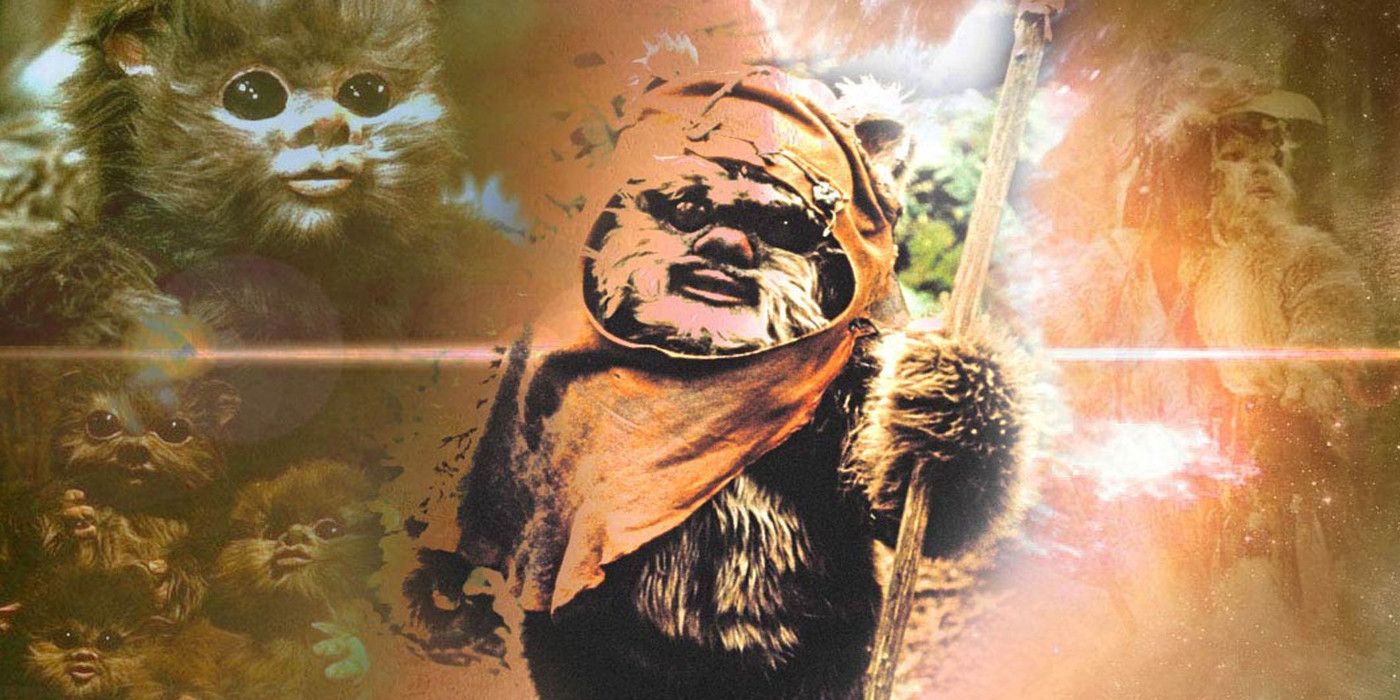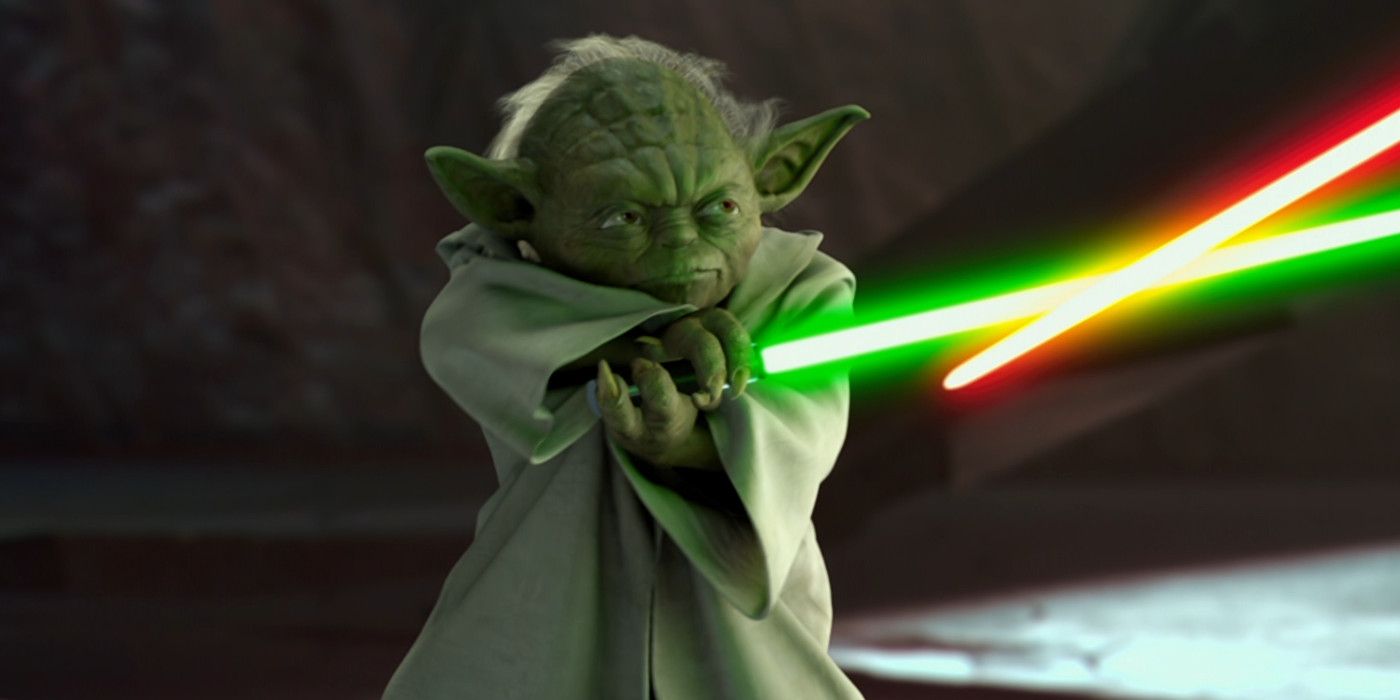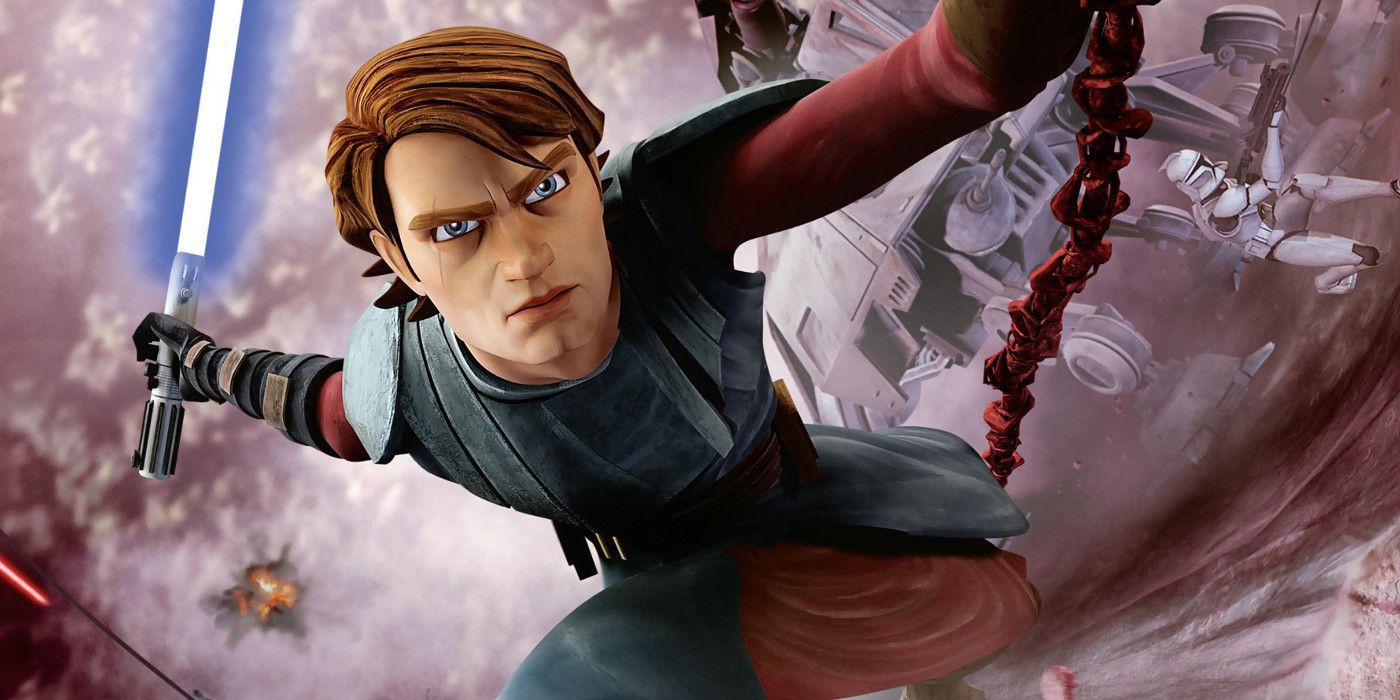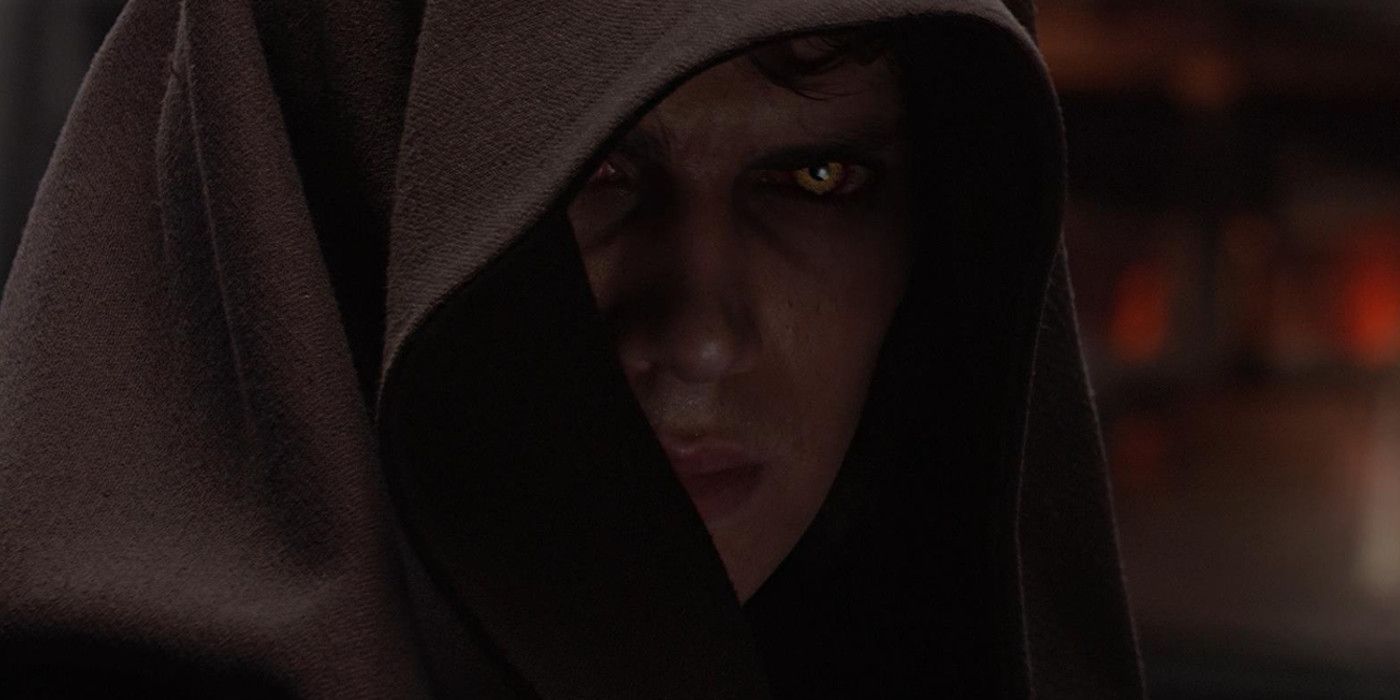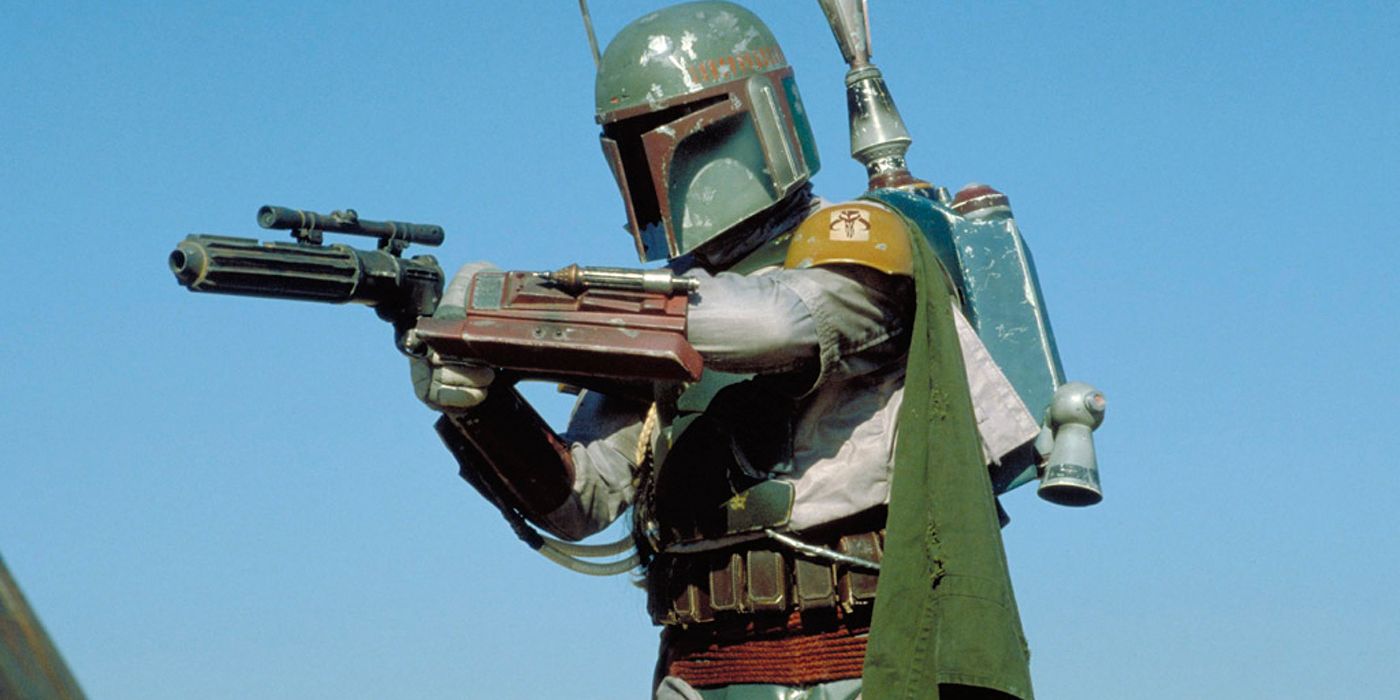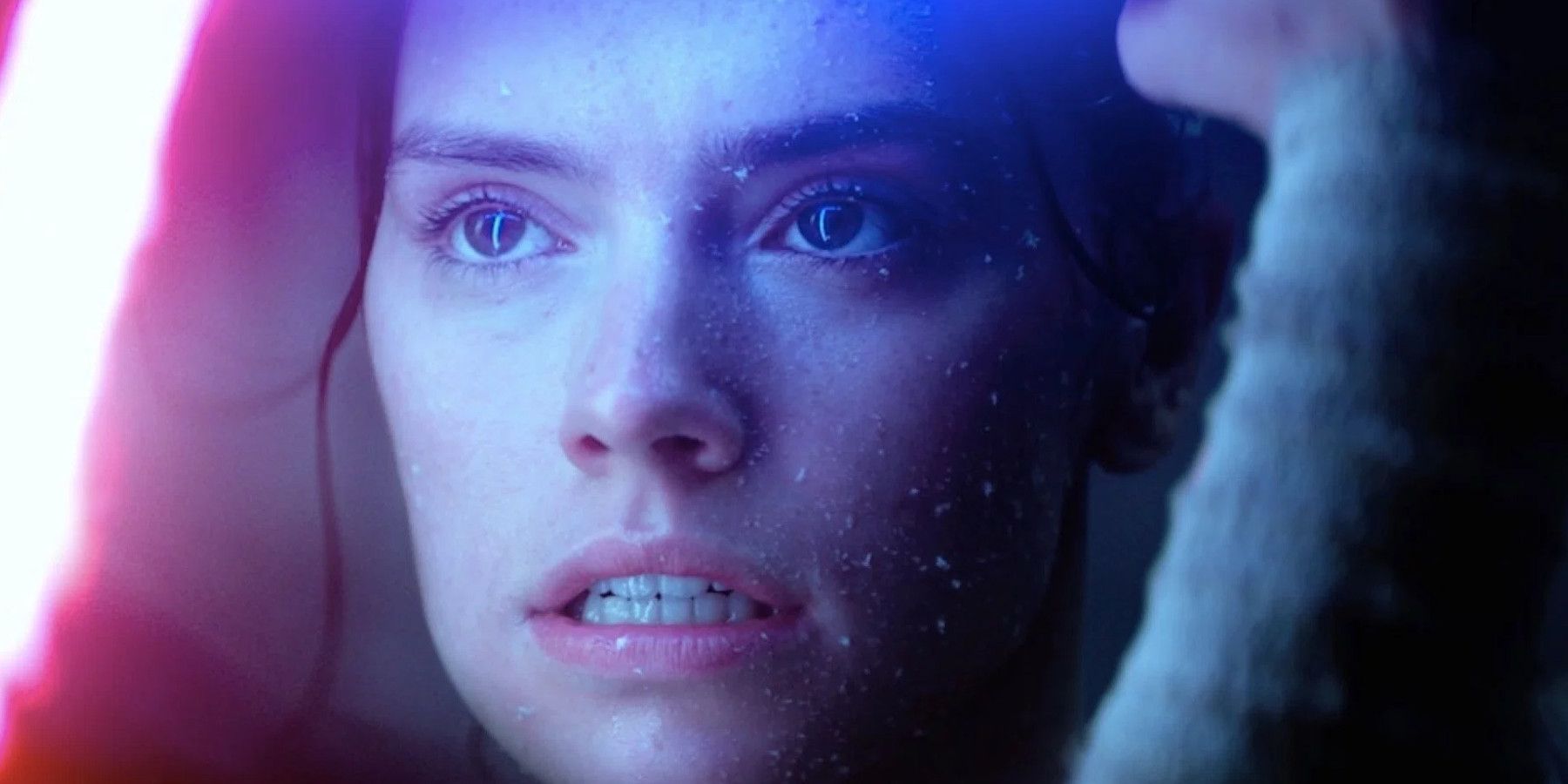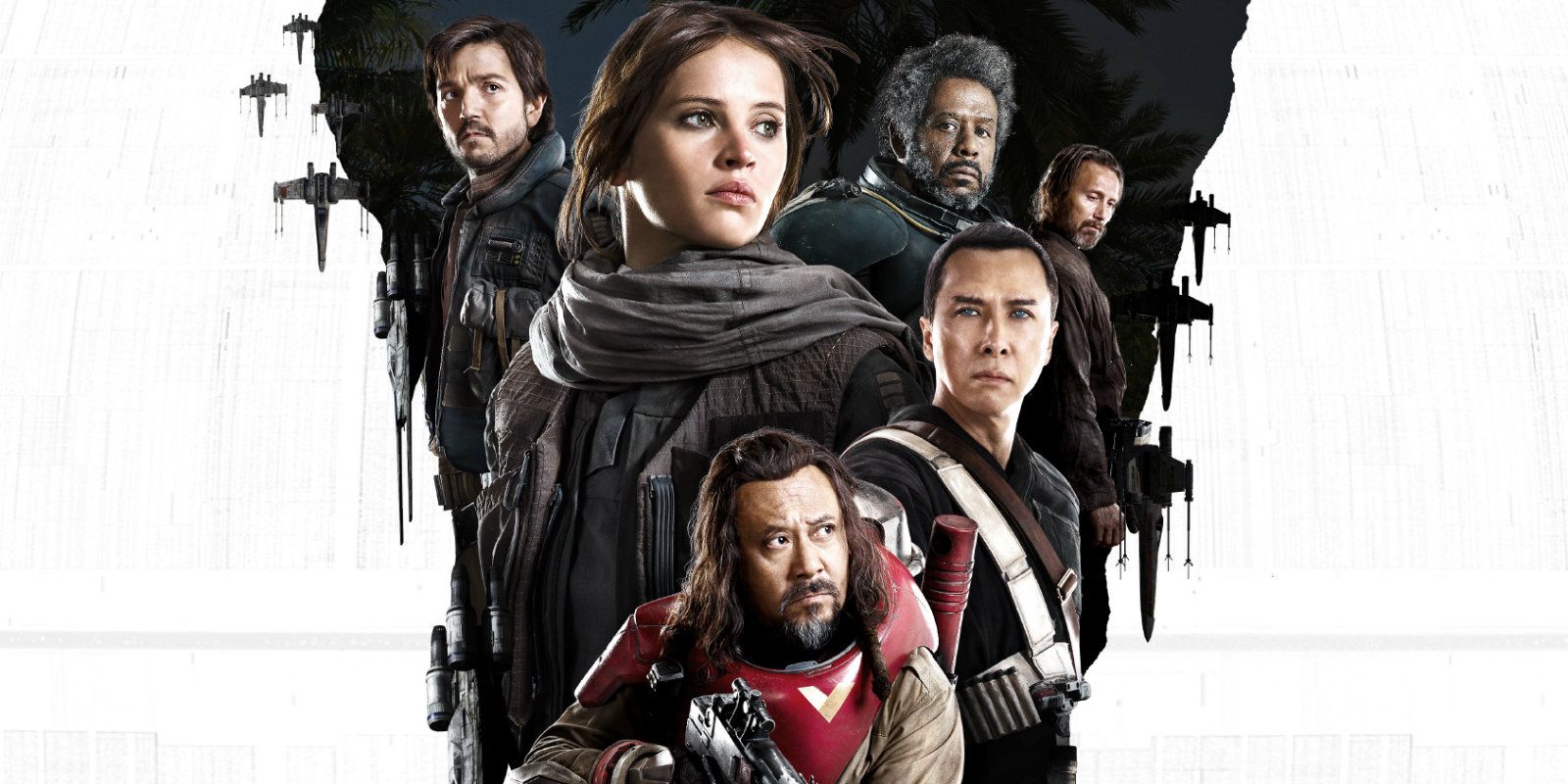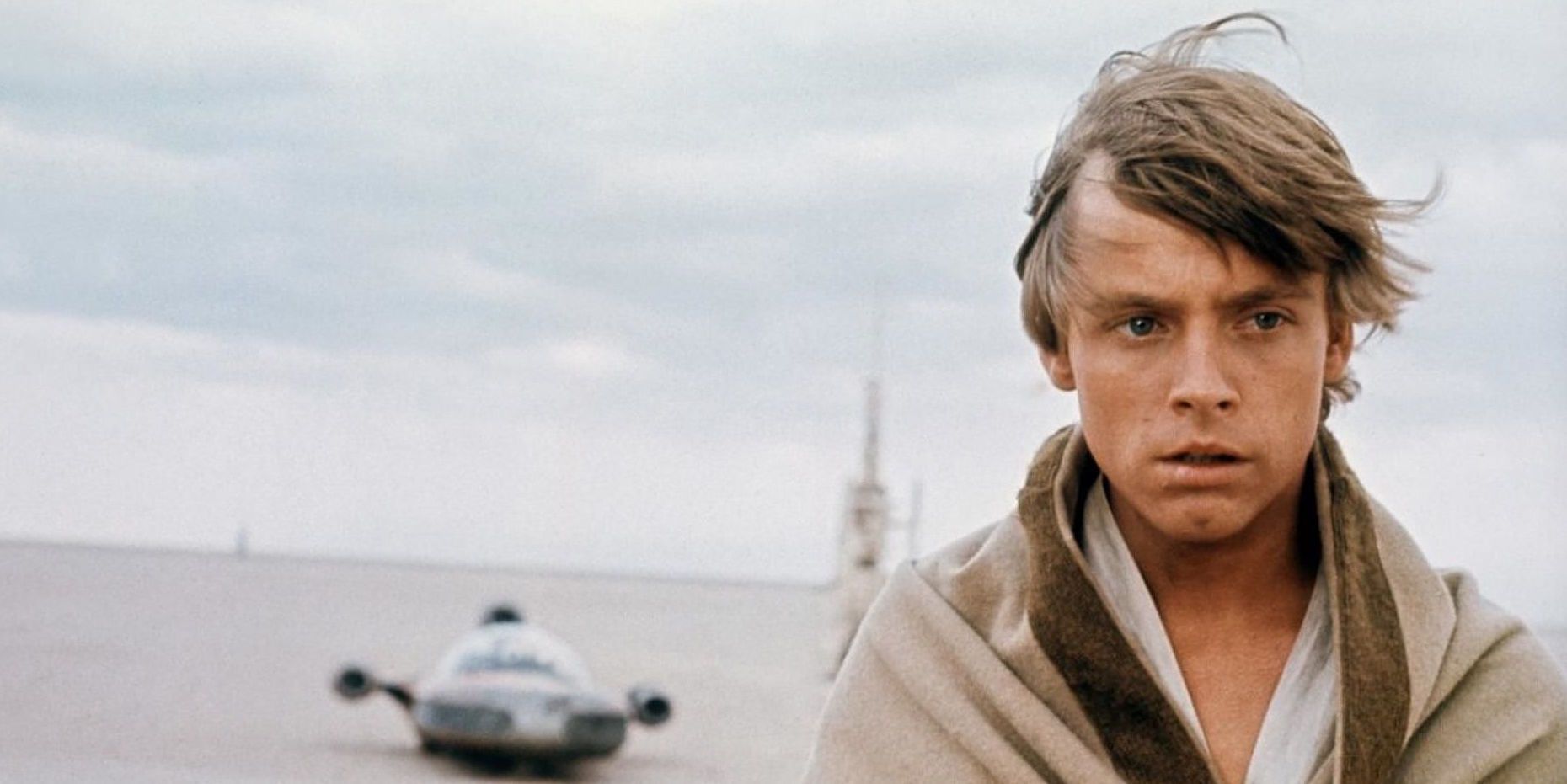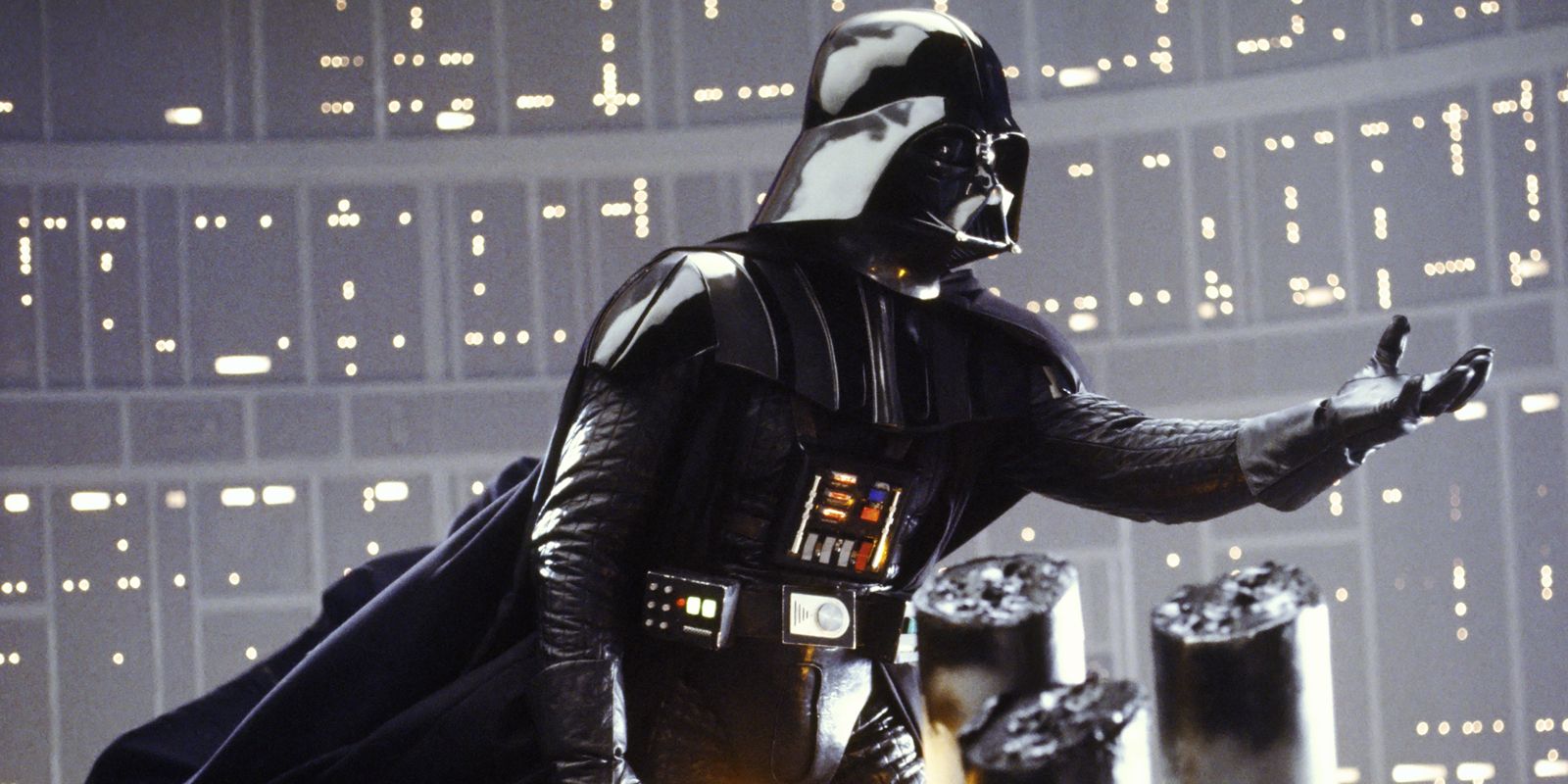Star Wars springs eternal. Since its debut in 1977, George Lucas’s space opera has moved from a fringe Science Fiction concept to the very center of the international zeitgeist. Star Wars has remained there ever since, setting box office records, surviving infamously lackluster prequels, and being reborn under the new masthead of The Walt Disney Studios.
Under the veteran leadership of J.J. Abrams, The Force Awakens largely met (and even exceeded) expectations last December, paving the way for Episode VIII a year from now and a host of sequels after that. Now that Rogue One: A Star Wars Story has deployed its rebel alliance, we thought it an appropriate time to survey the galaxy and rank its finest achievements, in order, and with as few Jar Jar Binks comments as possible. It appears we have already failed.
Here is Every Star Wars Movie, Ranked From Worst to Best:
12. Star Wars Holiday Special
Whatever criticisms you may have heard, the Holiday Special is far worse than you could ever imagine. If the first Star Wars ushered in a renaissance of science fiction cinema, this 1978 movie musical made a mockery of everyone involved in A New Hope. We can forgive the old-school BBC-era production values, and even the Leave it to Beaver vibe of Chewbacca’s home life on Kashyyyk, but watching Princess Leia croon the “Life Day” ballad is an abject horror. The only thing that could have been more offensive is if she beatboxed to John Williams’ “Imperial March" while chained to Jabba the Hutt.
This is not some crude commentary or mere internet hyperbole. No, George Lucas himself reflected on the Holiday Special and admitted, “If I had the time and a sledgehammer, I would track down every copy of that show and smash it.” From painful bonding scenes between Han and Chewie, to bizarre animated segments straight out of The Magic School Bus (that showed Boba Fett for the first time!), the Holiday Special is an absolute travesty that must be seen to be believed.
11. Caravan of Courage: An Ewok Adventure
Though the intergalactic care bears have received a lot of hate over the years, Ewoks have actually been the subject of not one, but two feature films. Their first televised movie, Caravan of Courage, takes place after the Battle of Yavin and sometime before the events in Return of the Jedi. In following the Towani family after their crash landing on the forest moon of Endor, the parents are separated from their children, Mace and Cindel, after being captured by the vicious (and admittedly creepy) Gorax. Caravan of Courage essentially delivers 96 minutes of an Ewok-led rescue mission.
The Burl Ives-led narration (presumably in lieu of the opening crawl) may be a bit off-putting, but with a story by George Lucas and art direction from the preeminent Joe Johnston, Caravan of Courage could have been a lot worse. Unlike the Star Wars Holiday Special, this cute kids flick does not deserve to be consumed in a great celluloid conflagration.
10. Ewoks: The Battle for Endor
Given the fairly innocuous family adventure in Caravan of Courage, fans weren’t expecting much of a change in the film’s 1985 sequel. Within minutes of The Battle for Endor, however, most of the Towani family gets killed and wiped out of the narrative. Only the young Cindel survives, whose escape from the violent Marauders marks the beginning of a decidedly different Star Wars story. This stark opening sequence recalls the devastation of Luke finding the ransacked home and charred corpses of his aunt and uncle.
On the whole, The Battle for Endor is a definite improvement over its predecessor. It introduces new fantasy elements into the world of Star Wars, and by relying less on Ewoks and more on humans (namely, with Wilford Brimley as Noa Briqualon), the movie attains a more epic aesthetic. Though it doesn't hold a candle to the original series, everything from the improved story to the sharper special effects helps make The Battle for Endor a fairly enjoyable movie.
9. Episode II: The Attack of the Clones
The Star Wars fantasies inspired by the Original Trilogy led to the nightmares of the prequels. The Attack of the Clones is the cinematic embodiment of excess. Though fans technically received their greatest wishes in the movie (Yoda in combat mode, an introduction to the rise of Palpatine, the beginning of the Clone Wars, etc.), nearly every element in Episode II feels forced, derivative and utterly devoid of joy. It doesn’t help that nearly every set piece is overshadowed by garishly obvious CGI, and each major character moment crippled by cheap dialogue. Somehow, that’s still not the movie’s major problem.
Above all, The Attack of the Clones suffers from a total lack of motivation and suspense. Everything feels terribly contrived, from the desiccated relationship of Anakin and Padme, to Obi-Wan’s cool but practically pointless showdown with Jango Fett. Though the ending to Episode II may help redeem earlier missteps, The Attack of the Clones remains a joyless movie-going experience that deserves its widely-heralded reputation as the worst film in the Star Wars canon.
8. The Clone Wars
It’s animated and it has an entirely different cast, but The Clone Wars is still a more enjoyable movie than The Attack of the Clones. While it may be a cleverly crafted amalgam of the TV series’ first episodes, The Clone Wars moves with an alacrity and wit that the prequels could seldom match. It’s almost as if the actors, now relegated to voiceover recording booths, were freed from the self-conscious pressures of playing in George Lucas’ beloved sandbox. For one, Matt Lanter fills in for Hayden Christensen and delivers a far more liberated performance filled with humor and inflection, and less of the “Darth-Vader-to-be” pomposity that dominated the prequels.
Indeed, The Clone Wars makes Anakin a considerably more compelling character in CGI, so much that we forget his future role as a perpetrator of genocide. This animated feature is far from "perfect" (what an imperfect metric, anyway), but it deserves praise for ushering in its episodic series that would enrich the mythology and universe of Star Wars.
7. Episode I: The Phantom Menace
Having existed in the Star Wars universe for over 17 years, it’s hard to imagine the galaxy far, far away without The Phantom Menace. For all of its shortcomings and grievances, the 1999 prequel is now etched into our collective memories, for better or worse. Given the universal acclaim for George Lucas’ space opera, the idea of a prequel series seemed like a slam dunk. Everyone loves a good origin story, after all, so what could go wrong?
Trade negotiations, for one thing. Note to file: if broadcast news can’t capture your attention with segments about NAFTA, it’s probably best to avoid anchoring your film with the same subject. Say what you will about Jake Lloyd, Jar Jar Binks and Midi-Chlorians, The Phantom Menace is a colossal waste of time than neither furthers Star Wars mythology or delivers an exciting piece of sci-fi escapism (except for the pod racing sequence). For all of the dynamic characters and enthralling plots in the Original Trilogy, The Phantom Menace abandons its rich heritage and creates a story that hardly resembles Star Wars at all.
6. Episode III: Revenge of the Sith
As Anakin comes full circle and moves from boy wonder to belligerent monster, George Lucas returns to the same arc of excellence displayed in the Original Trilogy. Though the prequels will forever be judged by a different metric than the founding episodes, The Revenge of the Sith aggressively taps into the archetypal struggle of good vs evil that has defined Star Wars. While crippled by the same lackluster and painfully obvious dialogue witnessed throughout The Phantom Menace and The Attack of the Clones, the bevy of action sequences and gorgeous aesthetics help elevate Episode III from the morass of prequels before it.
The Revenge of the Sith is an appropriately dark movie, but its final scenes evoke a true sense of horror for the emergence of Darth Vader. Gone are the bright colors and promises of safety, as The Revenge of the Sith nosedives into the macabre with gusto. Still, the movie is not without its inexplicable scenes, like Yoda bailing on his fight with Palpatine, or a newly minted Vader tapping into his inner Frankenstein and bellowing, “Nooo!” These sins can be forgiven, as The Revenge of the Sith improves upon its predecessors in nearly every way.
5. Episode VI: Return of the Jedi
Following The Empire Strikes Back is an unenviable task. Having delivered one of the biggest twists in cinema history, Episode V raised the stakes for the trilogy's finale to deliver. For the most, Return of the Jedi passes with flying colors. While it’s bogged down by a slew of unnecessary moments, and its dramatic import often undercut by the lovable but ubiquitous Ewoks, Episode VI contains some of the best-remembered moments in all of Star Wars. Han Solo’s rescue to the battle over the Sarlacc Pit is legendary, the speeder chase on the forest moon of Endor is wildly intense, and the showdown between Luke, Darth Vader and Emperor (Sheev!) Palpatine is everything you’d hoped it would be.
Despite these thrilling moments, much of Return of the Jedi feels inevitable and even contrived, as evidenced by Han and Leia's interminable wait on the forest moon of Endor. Speaking of which, Han Solo is also criminally underused in the finale, especially after stealing almost every scene in The Empire Strikes Back. He deserved to be a more integral player in the take down of the Empire, not just an honorary guardian of the talking bear population. All in all, Return of the Jedi is an admirable Star Wars movie and a satisfying bookend to the Original Trilogy.
4. Episode VII: The Force Awakens
If fans mock J.J. Abrams for borrowing from the Original Trilogy, they inadvertently criticize him for something George Lucas himself proved unable to do. Indeed, for all of his creativity, Lucas lost sight of the Original Trilogy's magic and moved the prequels far away from the beloved worlds that first seduced audiences. Abrams avoided the trap of expansion and wisely adhered to the winning formula George Lucas himself authored. The Force Awakens certainly bears many similarities to A New Hope, and while Rey’s journey is enthralling in its own right, it feels familiar. Han, Leia, Chewie and even Luke are back in the fold, and for the most part, Episode VII feels like a proper sequel to Return of the Jedi.
Adam Driver’s Kylo Ren is more than an homage to Darth Vader, he’s the ultimate villain for the millennial generation: full of rage and aspiration with a surfeit of insecurity. Though he offs his father, the beloved Han Solo, Kylo inspires great complexity and established a worthy villain for next year’s Star Wars Episode VIII. Though The Force Awakens falls prey to fluffy scenes that also weighed down the prequels (hello, Rathtars), it makes up for it with spicy dialogue and fresh, vibrant characters like Finn (John Boyega) and BB-8. Following Disney’s enormous acquisition of Lucasfilm, J.J. Abrams shouldered the cinematic burden and created a film that exceeded the prequels, satisfied (many) Star Wars fans, and laid the foundation for another decade of adventure in the galaxy far, far away.
3. Rogue One: A Star Wars Story
Not since the days of A New Hope has a Star Wars movie so confidently embraced its own mythology. Though Rogue One was a risky and real departure from the episodic format embraced by George Lucas, it made its mark as one of the very best stories set in the galaxy far, far away. Director Gareth Edwards showed no fear in exploring exotic planets, strange cultures and eccentric characters, but he never rushed their introductions. Hot on the heels of The Force Awakens, which moved at hyper speed from scene to scene, Rogue One had the confidence to embrace its deliberate pacing. Though it may tell an ill-fated story, the movie's epic conclusion hardly felt obvious. Indeed, there was always a glimmer of hope that some of the rebels might live to see another day.
Filling the space between his emergence in The Revenge of the Sith and his introduction in A New Hope, Darth Vader returned with more vigor than ever. Orson Krennic (Ben Mendelsohn) made for a wholly unique Imperial officer, but it was the all-CGI revival of Wilhuff Tarkin that proved the greatness of modern technology while shedding light on the Grand Moff’s manipulative rise to power.
As for the rebels, Jyn Erso (Felicity Jones) and Cassian Andor (Diego Luna) led the charge in fairly understated fashion. Their motley crew of warriors showed a selflessness and dedication to the cause we’d only heard about it in the surrounding movies. Perhaps it’s their sacrificial mission that best encapsulates the film: by remembering what made fans so besotted by Star Wars back in 1977, Rogue One lets us enjoy every moment of its story without feeling rushed to get anywhere.
2. Episode IV: A New Hope
Though it captured audiences with its science fiction accoutrements and cosmic action, Star Wars won the hearts of moviegoers by truly transporting them from the banality of their own lives. Indeed, A New Hope is a masterclass in world building, as evidenced by the original Cantina scene. In the original Star Wars, Luke Skywalker, C-3PO and Obi-Wan Kenobi take in the idiosyncrasies of the local watering hole for nearly a full minute before anyone says a word. This deliberate pacing isn’t a rarity in A New Hope, it's the rule. Throughout the movie, George Lucas displays a phenomenal amount of restraint in not only introducing and developing characters, but enhancing the foreign universes in which they live.
Consider another point of contention that further defines the distance between the Original Trilogy and the prequels. The enduring question surrounding A New Hope is well known: who shot first? The simple and brief interaction that saw Han Solo fry Greedo is the stuff of Star Wars lore, whereas discussion of the prequels inevitably centers on CGI graphics, lightsaber duels and other elements that should remain on the periphery of Lucas' universe.
On the surface, the scope of A New Hope appears smaller than Episodes V and VI, but its obeisance to details paid dividends few other sci-fi properties have equaled. As a result, the maiden voyage of Star Wars painted a broad canvas that enticed viewers to explore it without ever overstating its vision or stopping to its audience. A New Hope wasn't afraid to let you peer inside its fantastical world, and thanks to Lucas' steady hand, it was in no hurry to win your favor. Perhaps that’s why it only took three years for the Lucasfilm team to return to the galaxy with the best film in the series.
1. Episode V: The Empire Strikes Back
From the Battle of Hoth to Cloud City, The Empire Strikes Back is a space opera of truly epic proportions. Where A New Hope drew its sprawling map, Episode V boldly explores a variety of terrains, planets and systems. However rousing these cosmic voyages may be, the truly momentous developments in The Empire Strikes Back are internal. It’s the expansion of the lead characters and their moral plights that has made Episode V a true hallmark of cinema. The Imperial shadow grew in A New Hope, but it remained a distant and relatively nameless threat. That changes in the sequel, and in The Empire Strikes Back, the cavernous space between good and evil is filled by a continent of grey. Despite his mouth-breathing menace, it becomes clear that Darth Vader is no mindless villain, but a man, a father with a history of his own. Star Wars then moves from an intergalactic romp to a family drama, whittling the galaxies down to the shared DNA of a father and his son.
The Skywalkers aren’t the only beneficiaries of George Lucas’ refined vision and Irvin Kershner’s immaculate direction. Han Solo cemented his status as a leading man for the ages, from his stolen kiss with Leia to his immersion into carbonite, and his “I know" farewell. Lando Calrissian enhanced the ensemble, Yoda (and his ever-reversing language) became the stuff of legend, and John Williams’ soundtrack reached its apex. The Empire Strikes Back remains the best Star Wars movie on record, and one of the great cinematic epics of all time.
---
How do you rank the Star Wars series? Let us know in the comments!

